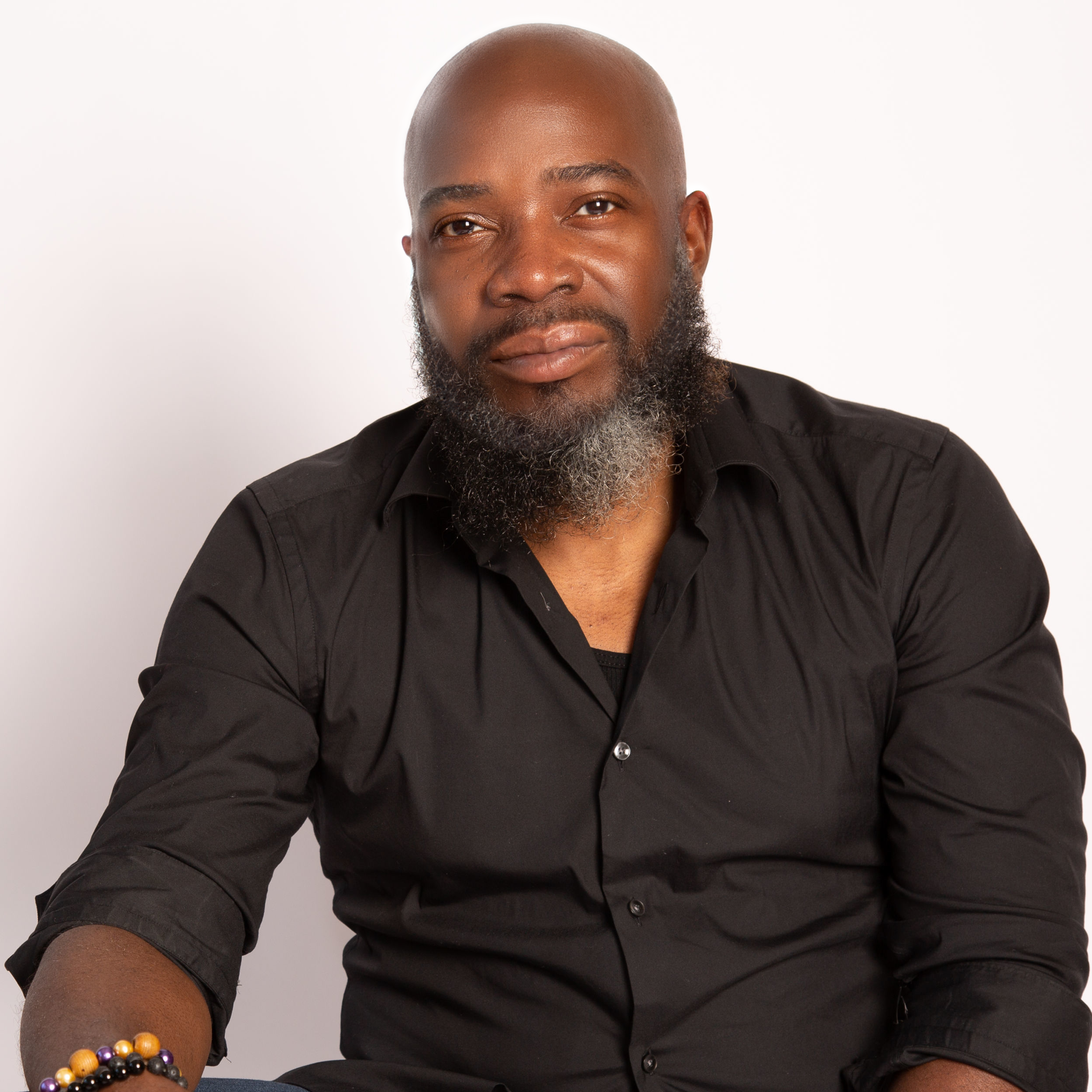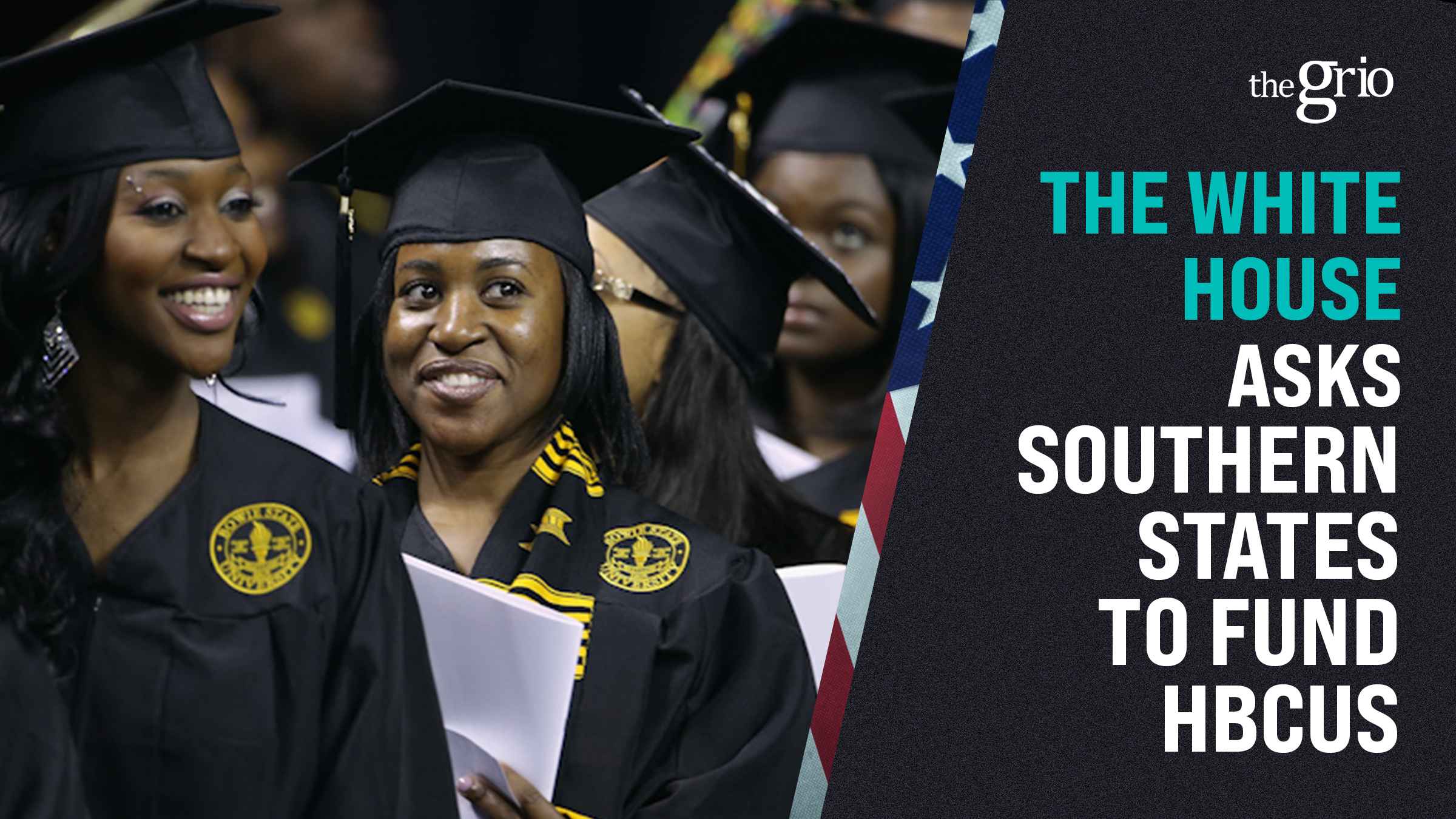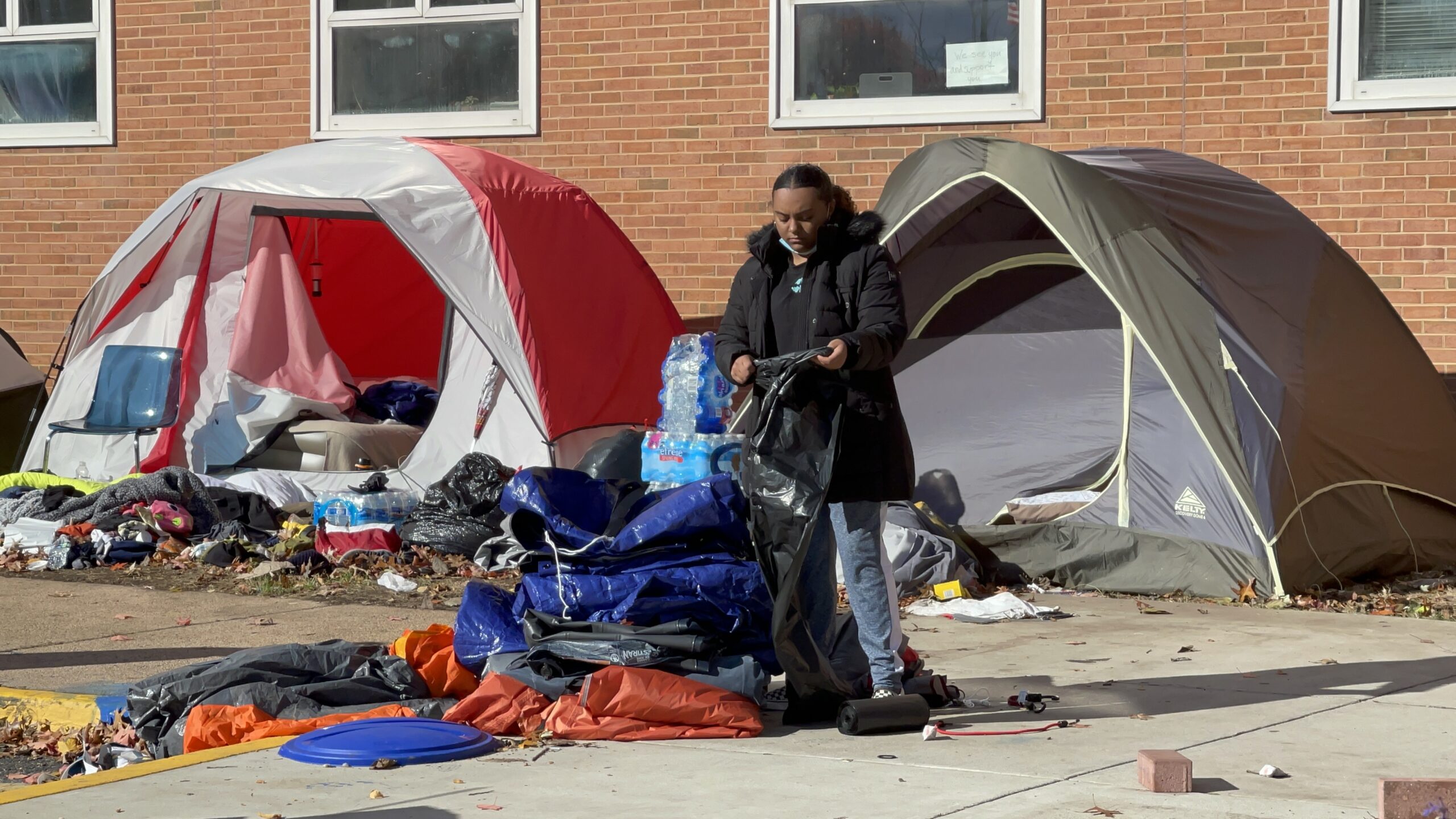The historically white heist: How America illegally looted HBCUs
OPINION: The Biden administration recently acknowledged that states have stolen billions from HBCUs to fund white prosperity. But how will America fix it?

Editor’s note: The following article is an op-ed, and the views expressed are the author’s own. Read more opinions on theGrio.
Crime: (noun): an illegal act for which someone can be punished by the government
2: a grave offense especially against morality
Law (noun) – 1. a rule of conduct or action prescribed or formally recognized as binding or enforced by a controlling authority.
a. The control brought about by the existence or enforcement of such law
b. The actions of laws considered as a means of redressing wrongs.
— Merriam-Webster’s Dictionary
On Sept. 18, the Biden administration notified America of its part in a $13 billion heist.
In joint letters to Alabama, Arkansas, Florida, Georgia, Kentucky, Louisiana, Maryland, Mississippi, Missouri, North Carolina, Oklahoma, South Carolina, Tennessee, Texas, Virginia, and West Virginia, Secretary of Education Miguel Cardona and Secretary of Agriculture Tom Vilsack demanded that governors of their respective states fix a multi-billion-dollar funding disparity between land-grant Historically Black Colleges and Universities (HBCUs) and predominately white counterparts.“Using readily available data from the National Center for Education Statistics (NCES) Integrated Postsecondary Education Survey (IPEDS) that ranges from 1987 to 2020, we calculated the amount that these institutions would have received if their state funding per student were equal to that of 1862 institutions,” explained letters to 16 governors from the U.S. Department of Agriculture. The letters added that states were required by law to “provide an equitable distribution of funds” between historically Black institutions and the formally segregated white universities.
But America is not a nation of laws.
Laws are more than words scrawled on parchment. Laws are enforced. Laws redress wrongs and punish criminal activity. And when it comes to the great white heist that handicapped historically Black colleges and universities, the crimes have gone unpunished. The laws have never been enforced.
The Heist of the Centuries
In 1862, the Morrill Act stole 10.7 million acres from 245 Native American tribal nations, breaking dozens of formally recognized treaties that were enforced and controlled by the federal government. When the Second Morrill Act extended the strong-armed robbery in 1890 to the states that lost a white supremacist insurrection, Congress specified that the land-grant institutions would provide higher education for all races.
Even though the Supreme Court would not create the “separate but equal” doctrine for another six years, the federal government gave the former confederate states the authority to commit an illegal act by creating separate institutions of higher education for Black Americans. The “law” dictated that state budgets would fund these 19 historically Black “land-grant” colleges.
That never happened.
Instead, states used these federal and state funds to create and maintain predominately white public institutions. In some years, the historically Black colleges received no money from the states. And, in every single case, there is not a single historically Black land-grant college that has received the legally prescribed funding.
The tax dollars paid by disproportionately Black Southern populations were used to fund the opportunities and generational wealth-building for white citizens. For instance, Alabama didn’t just underfund predominately Black Alabama A&M University. Since 1987, the 27% Black state essentially transferred more than $527 million to Auburn University, a school that’s only 7% Black. Georgia (33% Black) gave more than $603 million to the University of Georgia (10.6% Black), which rightfully belonged to Fort Valley State. Louisiana State University’s student population is 13% Black. The state is 33% Black. Southern University’s post-1987 funding disparity is $1.1 billion.
In the past 35 years alone, the larceny amounts to a whopping $13,055,622,325 — an average of nearly $816 million per institution. Even worse, the USDA figures do not factor in the present-day dollar value of the illegally misappropriated funds. As the joint letter notes, a century and a half of illegal activity “disadvantages the students, faculty, and community that the institution serves” and is a large reason why HBCUs have not “been able to advance on par” with their white counterparts.
This theft did not just handicap Black institutions; it benefitted every white family. Even the white families that did not attend these colleges paid lower taxes. They had jobs, lived in neighborhoods and sent their children to school where their neighbors, bosses and children reaped the harvests of education funded by Black taxpayers. They cheered for the football teams and enjoyed the economic benefits of an educated populace. More importantly, they had opportunities that Black taxpayers could not avail themselves of.
They were the recipients of stolen goods.
All the smoke
John Sylvanus Wilson Jr. calls it a “crime.”
A 1979 graduate of Morehouse College, Wilson served as the Obama administration’s executive director of the White House Initiative on HBCUs before he eventually became the 11th president of his alma mater. In his new book, “Hope and Healing: Black Colleges and the Future of American Democracy,” Wilson contextualizes the multigenerational hostility against Black educational institutions as part of “the general climate of hatred and violence” that paralleled the origin story of HBCUs. And while numerous studies show that HBCUs outperform their white counterparts in financial stability, graduation rates and social mobility, Wilson contends that the need for HBCUs to “punch above their weight” is by design. “It is it is structural because from the start, the states sustained the race base and equitable institutional funding, and the federal government stood idly by for well over a century.”
“You know, this is this is a long-standing crime,” Wilson told theGrio. “There have been generations of African-Americans who have pointed to this. It’s good that it’s finally acknowledged by the federal government, but this same letter could have gone to the states back in 1891, so this confession is not really a confession. So I’m not gonna over celebrate, because it’s long overdue.”
But, instead of theft, Wilson equated America’s multigenerational anti-HBCU criminal conspiracy to a fire. “I think the confession of a [$13 billion] crime is a good thing,” Wilson said. But no one should mistake this for the larger crime that has been committed. It would be like focusing on the fire and ignoring the generations of smoke damage from the fire. The inequitable funding was the original fire. But the smoke damage is in the welfare implications of it, the health implications of that, the life expectancy, the poverty rate, the size of the alumni body and the scale of alumni giving at these institutions are implications of that original crime.”
When asked about the specific consequences, Wilson identified seven distinct areas impacted by the burgling of Black wealth.
- Generational debt: How many scholarships might the $13 billion have provided to families, thereby setting them on a new trajectory? How many families mortgaged their financial security to provide an education to their loved ones?
- Generational impact: We know that college-educated families are more likely to produce college graduates. How many first-generation students would have actually been fourth or fifth-generation students had it not been for the discipline to allegiance to white supremacy maintained by Southern governors?
- Wealth gap: How much narrower would the gap between Black and white wealth be had it not been for these inequities, which ultimately stunted the ability of African-American families to emerge from impoverished conditions?
- Community impact: What about the other gaps in health and longevity and Black community infrastructures? Black community infrastructures?
- Alumni giving: Think about the disparities in HBCU endowments. How much larger alumni bodies would these institutions have if not for this crime?
- Black scholarship: If funded equally, these institutions would not just be able to serve more students, they would hire more faculty, employ more scholars and produce more research for the community they served
- Infrastructure and maintenance: When you see run-down facilities and students protesting dorm conditions, the deferred maintenance is a direct result of this theft.
According to Wilson, these inequities are compounded by current practices, including legacy admissions, the Supreme Court’s irrational decision to end affirmative action and the conservative belief in colorblind policies. Noting that the acknowledgment of a $13 billion shortfall “does not capture the scale of the crime,” Wilson said that some form of reparations, not race neutrality, is the only possible fix.
“Once we arrive at a place that is widely understood and recognized as equity, then you can be colorblind,” he explained. “But this very acknowledgment is evidence that Lady Justice has never been blindfolded. This is not the time to be colorblind. It’s OK to be colorblind after we realize an equitable world. But before we do, you have to see who you’re trying to heal. You have to heal who you’ve injured. So, colorblindness is premature.”
Wilson’s book opens by explaining that “[b]arberism was the weather” that birth HBCUs. According to the Equal Justice Initiative, white supremacist terrorists murdered more than 2,000 Black people between 1865 and 1876. However, in the book “A is for Arson: A History of Vandalism in American Education,” Campbell F. Scribner provides a more enlightening statistic to aptly describe this nation’s “grave offense against morality.”
Between 1864 and 1874, white mobs burned down at least 631 Black schools.
America continues to let the fire burn.

Michael Harriot is an economist, cultural critic and championship-level Spades player. His New York Times bestseller Black AF History: The Unwhitewashed Story of America is available everywhere books are sold.
TheGrio is FREE on your TV via Apple TV, Amazon Fire, Roku, and Android TV. Please download theGrio mobile apps today!



